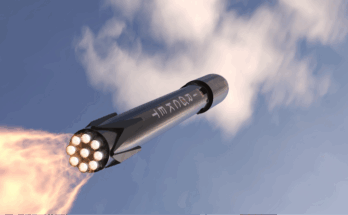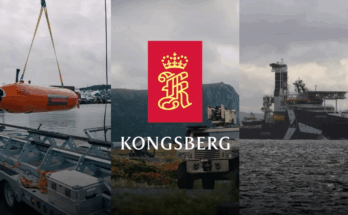by Richard Pettibone, Aerospace & Defense Companies Analyst, Forecast International.
Finmeccanica’s restructuring is beginning to pick up steam. In late 2014, the company initiated a landmark restructuring that will streamline operations, reduce redundancies, and possibly lead to the sale of some non-core assets.
The project will see Finmeccanica reorganized along divisional lines. As part of this, several of the company’s major subsidiaries will be absorbed into the parent. AgustaWestland, Alenia Aermacchi, and Selex ES will now operate as traditional divisions. Previously, the headquarters of Finmeccanica acted as more of a holding company for the aforementioned operating brands. The aim is to cut costs by removing areas of duplication, such as in R&D, and exploring the divestiture of unprofitable activities across the board.
This strategy follows the playbook of many industrial consolidations of late – the focus has been on core operations. In Finmeccanica’s case, this means concentrating on operations in the aerospace, defense, and security industries. Over the next five years, operations that do not fit within these domains will be divested, merged, or closed. This trimming of the portfolio should help the firm sharpen its focus and better deploy limited resources to support continued growth in an anemic home market.
Up first is the divestment of Finmeccanica’s long-troubled rail operations. In early 2015, the company reached an agreement to sell AnsaldoBreda and its 40 percent interest in Ansaldo STS to Hitachi for EUR1.9 billion. Proceeds from this transaction will be used to lower Finmeccanica’s debt to an estimated EUR3.4 billion. With the rail operations out of its portfolio, the company will be able to better focus its resources on new core sectors.
Leading Finmeccanica’s aerospace operations is helicopter manufacturer AgustaWestland. Having been recently cleared by Italian courts of any wrongdoing in an Indian helicopter procurement, the firm can now count its successes. The biggest achievement is the delivery of the company’s newest helicopter, the AW189, which is currently the only new-generation super-medium rotorcraft in service. This was followed by the military variant of the AW189, the AW149, which was certified in mid-2014. The takeaway is AgustaWestland’s success in making the program easily adaptable to both civil and military markets – a key factor as defense budgets tighten and development funds evaporate.
In fixed-wing aircraft markets, rationalization is underway. Alenia Aermacchi’s trainers continue to enjoy success, with long-term production of the M-346 forecast to be stable over the next 10 years. Despite losing its U.S. partner General Dynamics on a potential bid for the U.S. Air Force’s T-X jet trainer program, Alenia Aermacchi is still expected to participate with a new, as-yet unnamed partner.
More troublesome is Alenia’s partnership with Sukhoi on the Superjet 100. According to reports, there have been no significant returns on investment for Finmeccanica on the project thus far. The political issue of Russia’s aggression in Ukraine is undoubtedly exacerbating the situation. Finmeccanica may push for the joint venture to tighten its governance and get more in line with Western standards.
In its defense markets, Selex ES will also see some consolidation as Finmeccanica looks to trim product lines. For example, three of Finmeccanica’s companies are invested in unmanned air vehicle technologies: AgustaWestland, Alenia Aermacchi, and Selex ES. Because Selex ES is an electronics systems producer, putting UAVs under its brand would make sense, as it can supply the whole system, from control systems to craft. This is exactly the type of redundancy Finmeccanica hopes to eliminate through its reorganization.
The most drastic restructuring action will be undertaken at Finmeccanica’s U.S. subsidiary, DRS Technologies. DRS was acquired for $5.2 billion in 2008, shortly before the global financial crisis struck. The value of the deal has since plummeted, with DRS’s sales reported at $1.4 billion for 2014 in Finmeccanica’s annual report.
In the past, Forecast International has speculated that DRS could be sold wholesale, but now it appears that pieces will be divested in the near term. In 2015, Finmeccanica began hunting for buyers for some of DRS’s assets. The company is currently shopping DRS’s Aviation & Logistics and Tactical Communications & Networks units, which could fetch around $200 million. Despite this, North America remains a focal point for Finmeccanica via DRS. As such, a wholesale divestiture seems unlikely, as DRS leads Finmeccanica’s penetration into the world’s largest defense market. In fact, DRS is conducting the same review as its parent, pruning its portfolio to focus on core capabilities. In the long run, management is betting that further globalization of U.S. military goods and services will occur, and DRS will be there to capture its share.
The actions undertaken so far make it clear that this is a new Finmeccanica. With past scandals in the rearview mirror and a clear road map for what lies ahead, Finmeccanica should be entering a period of stability and, potentially, renewed growth.
For 50 years, Forecast International intelligence reports have been the aerospace and defense industry standard for accurate research, analysis, and projections. Our experienced analysts compile, evaluate, and present accurate data for decision makers. FI's market research reports offer concise analysis of individual programs and identify market opportunities. Each report includes a program overview, detailed statistics, recent developments and a competitive analysis, culminating in production forecasts spanning 10 or 15 years. Let our market intelligence reports be a key part of reducing uncertainties and mastering your specific market and its growth potential. Find out more at www.forecastinternational.com



